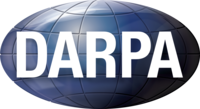
Photo from wikipedia
The world of science is growing at an unprecedented speed with more and more scholarly papers produced each year. The scientific landscape is constantly changing as research specialties evolve, merge… Click to show full abstract
The world of science is growing at an unprecedented speed with more and more scholarly papers produced each year. The scientific landscape is constantly changing as research specialties evolve, merge or become obsolete. It is difficult for researchers, research managers and the public alike to keep abreast with these changes and maintain a true and fair overview of the world of science. Such an overview is necessary to stimulate scientific progress, to maintain flexible and responsive research organizations, and to secure collaboration and knowledge exchange between different research specialties and the wider community. Although science mapping is applied to a wide range of scientific areas, examples of their practical use are sparse. This paper demonstrates how to use a topical, scientific reference maps to understand and navigate in dynamic research landscapes and how to utilize science maps to facilitate strategic thinking. In this study, the research domain of biology at Aarhus University serves as an example. All scientific papers authored by the current, permanent staff were extracted (6,830 in total). These papers were used to create a semantic cognitive map of the research field using a co-word analysis based on keywords and keyword phrases. A workflow was written in Python for easy and fast retrieval of information for topic maps (including tokens from keywords section and title) to generate intelligible research maps, and to visualize the distribution of topics (keywords), papers, journal categories, individual researchers and research groups on any scale. The resulting projections revealed new insights into the structure of the research community and made it possible to compare researchers or research groups to describe differences and similarities, to find scientific overlaps or gaps, and to understand how they relate and connect. Science mapping can be used for intended (top-down) as well as emergent (bottom-up) strategy development. The paper concludes that science maps provide alternative views of the intricate structures of science to supplement traditional bibliometric information. These insights may help strengthen strategic thinking and boost creativity and thus contribute to the progress of science.
Journal Title: PLoS ONE
Year Published: 2021
Link to full text (if available)
Share on Social Media: Sign Up to like & get
recommendations!